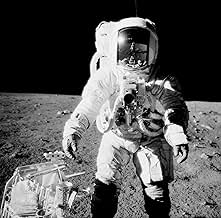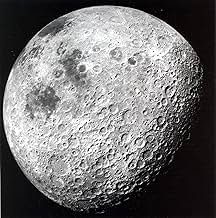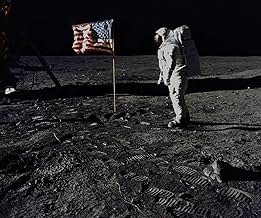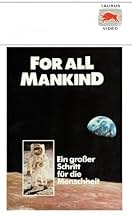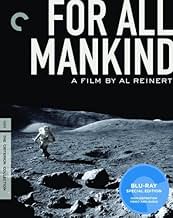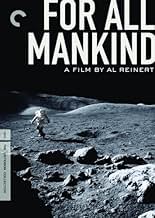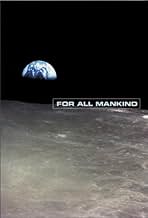CALIFICACIÓN DE IMDb
8.1/10
6.9 k
TU CALIFICACIÓN
Una mirada en profundidad a varias misiones de alunizaje de la NASA, comenzando con el Apolo 8.Una mirada en profundidad a varias misiones de alunizaje de la NASA, comenzando con el Apolo 8.Una mirada en profundidad a varias misiones de alunizaje de la NASA, comenzando con el Apolo 8.
- Nominado a 1 premio Óscar
- 3 premios ganados y 3 nominaciones en total
Jim Lovell
- Narrator - Apollo 8, Apollo 13
- (voz)
- (as James A. Lovell Jr.)
Ken Mattingly
- Narrator - Apollo 16
- (voz)
- (as T. Kenneth Mattingly II)
Russell Schweickart
- Narrator - Apollo 9
- (voz)
- (as Russell L. Schweickart)
Eugene Cernan
- Narrator - Apollo 10, Apollo 17
- (voz)
- (as Eugene A. Cernan)
Charles Conrad
- Narrator - Apollo 12
- (voz)
- (as Charles P. Conrad Jr.)
Richard Gordon
- Narrator - Apollo 12
- (voz)
- (as Richard F. Gordon Jr.)
Alan Bean
- Narrator - Apollo 12
- (voz)
- (as Alan L. Bean)
Jack Swigert
- Narrator - Apollo 13
- (voz)
- (as John L. Swigert Jr.)
Stuart Roosa
- Narrator - Apollo 14
- (voz)
- (as Stuart A. Roosa)
James Irwin
- Narrator - Apollo 15
- (voz)
- (as James B. Irwin)
Charles Duke
- Narrator - Apollo 16
- (voz)
- (as Charles M. Duke Jr.)
Harrison Schmitt
- Narrator - Apollo 17
- (voz)
- (as Harrison H. Schmitt)
Buzz Aldrin
- Self
- (material de archivo)
Bill Anders
- Self
- (material de archivo)
Neil Armstrong
- Self
- (material de archivo)
Stephen Bales
- Self
- (material de archivo)
- (as Steve Bales)
Frank Borman
- Self
- (material de archivo)
Opiniones destacadas
I won't reiterate all of the praise of this film except to say that if I had just few more spare dollars when it was released on laserdisc, I would have bought a laserdisc player just for this title (and 2001). Fortunately years later I've already purchased a DVD player and For All Mankind has finally been released on that format.
To me the defining moment of this film is the lunar lander slowly returning to the command module. At first we only see the cratered surface of the Moon moving below at incredible speed. Then we see a tiny motionless speck above it. Was it a defect in the lens? Of course not. It's the lunar lander slowly returning from the surface. It seems to take much longer than it really does because there are no cuts and no narrator explaining what we already know we're seeing. There's only a dot turning into a space ship. What more could you add to this amazing sight?
To me the defining moment of this film is the lunar lander slowly returning to the command module. At first we only see the cratered surface of the Moon moving below at incredible speed. Then we see a tiny motionless speck above it. Was it a defect in the lens? Of course not. It's the lunar lander slowly returning from the surface. It seems to take much longer than it really does because there are no cuts and no narrator explaining what we already know we're seeing. There's only a dot turning into a space ship. What more could you add to this amazing sight?
I taped this off British TV in 1989 or 1990, and could never understand why nobody I speak to has ever heard of it! Even real space enthusiasts have not seen or heard of this wonderful film. Even today it remains unavailable on DVD except in the USA (buy an import from Amazon, well worth it!).
Quite simply there is no better way to tell the story of such a unique and special journey than in the words of those who undertook it. Here we have the live radio transmissions between the astronauts and Houston, reminiscences from the astronauts a decade or so after and no interference from any professional actor/narrator. There is footage even the most obsessed space enthusiast will not have seen, especially the 8mm film shot by the astronauts themselves.
This film presents, in a mere 80 minutes, the story of the Apollo missions from pre-launch preparations though the journey, their time on the surface of the moon to the take-off from the moon and safe return to earth. The views are as majestic as any on the earth, all accompanied by soft and appropriately ethereal music.
Why this hidden gem of a film is not constantly being broadcast on a documentary channel or even entertainment stations is totally beyond me - and also beyond those I have shared the DVD with. Seek out this film and watch it. As a friend said to me, "why is it we can walk into any shop and buy row upon row of rubbish and we cannot buy this, which shows a real achievement of mankind".
Quite simply there is no better way to tell the story of such a unique and special journey than in the words of those who undertook it. Here we have the live radio transmissions between the astronauts and Houston, reminiscences from the astronauts a decade or so after and no interference from any professional actor/narrator. There is footage even the most obsessed space enthusiast will not have seen, especially the 8mm film shot by the astronauts themselves.
This film presents, in a mere 80 minutes, the story of the Apollo missions from pre-launch preparations though the journey, their time on the surface of the moon to the take-off from the moon and safe return to earth. The views are as majestic as any on the earth, all accompanied by soft and appropriately ethereal music.
Why this hidden gem of a film is not constantly being broadcast on a documentary channel or even entertainment stations is totally beyond me - and also beyond those I have shared the DVD with. Seek out this film and watch it. As a friend said to me, "why is it we can walk into any shop and buy row upon row of rubbish and we cannot buy this, which shows a real achievement of mankind".
I've been a fan of Brian Eno's work for years, and have cherished the album entitled "Apollo: Atmospheres and Soundtracks." The album is the commissioned soundtrack for this compilation documentary of the NASA Apollo missions. What a harmony of the arts this is. The stark NASA footage coupled with the hauntingly soothing score create a fascinating marriage of techniques and styles. Although the music editor overused certain tracks over others, the subtlety of Eno's music prevents it from becoming repetitive. A pleasure to watch.
Great footage, but the missions are all over the place without really telling us. If you don't have a little knowledge beforhand, like Apollo 13, you're pretty much left in the dark which mission is which and may think it was just 1 mission to the moon (and back obviously). Started to really dawn on me when Apollo 13 had that breathing problem (which was solved in a jiffy in this documentary) and then a crew was going for a moonlanding ( which obviously Appolo 13 never did. But hey when you hear the name Neil Armstrong you are pretty much back on course. Ah okay great i am seeings Apollo 11 and the first moonlanding at the moment : )
Footage: 8.5 Overall Docu : 6.
Footage: 8.5 Overall Docu : 6.
Most of this NASA footage is not what you've been able to see on the news but footage that shows more of the humanity and introspective moments that happen in the midst of the spectacular. Extended moments of them approaching the moon before the Eagle lands and the astronauts describing what it's like walking on the moon and as they explore and try to take a moment stop and simply ponder being on the Moon. A must see for any space fan.
¿Sabías que…?
- TriviaThe staging footage was captured because NASA wanted to document the flight process of an unmanned Saturn flight for feedback in case there was a failure for engineers to look at footage to see what went wrong. Cameras were mounted in strategic locations, kicking on at critical moments to document the staging process for less than half a minute. After completion, the light-tight canisters containing the exposed film were jettisoned, dropping to earth with homing beacons and parachutes inside protective heat shields. Air Force C-130 transport planes, towing gigantic nets, recovered the canisters in the southern Atlantic Ocean.
- ErroresThe opening of the documentary incorrectly states that: "During the four year between December 1968 and November 1972, there were nine manned flights to the moon." The last lunar mission, Apollo 17, took place in December 1972.
- Citas
Charles M. Duke Jr.: The only bad part about zero gravity in Apollo was goin' to the bathroom. We had a very crude system. For your feces it was a bag, and you put this bag in the right position. So you go, but the only thing is that nothing goes to the bottom of the bag in zero gravity.
- Créditos curiososFilmed on location by the United States National Aeronautics and Space Administration.
- Bandas sonorasSirens
Courtesy of Opal Records (Music For Films III)
Written and Performed by Daniel Lanois and Brian Eno
Licensed by Upala Music/Hamstein (BMI)
Selecciones populares
Inicia sesión para calificar y agrega a la lista de videos para obtener recomendaciones personalizadas
- How long is For All Mankind?Con tecnología de Alexa
Detalles
- Fecha de lanzamiento
- País de origen
- Idioma
- También se conoce como
- National Geographic: For All Mankind
- Locaciones de filmación
- Sea of Tranquility, The Moon, Space(Apollo 11 landing site)
- Productoras
- Ver más créditos de la compañía en IMDbPro
Taquilla
- Total en EE. UU. y Canadá
- USD 770,132
- Fin de semana de estreno en EE. UU. y Canadá
- USD 33,777
- 5 nov 1989
- Total a nivel mundial
- USD 770,366
- Tiempo de ejecución1 hora 20 minutos
- Color
- Mezcla de sonido
- Relación de aspecto
- 1.37 : 1
Contribuir a esta página
Sugiere una edición o agrega el contenido que falta

Principales brechas de datos
By what name was For All Mankind (1989) officially released in India in English?
Responda


